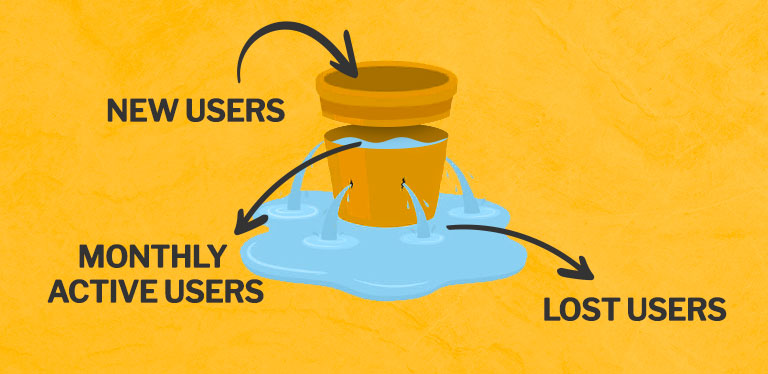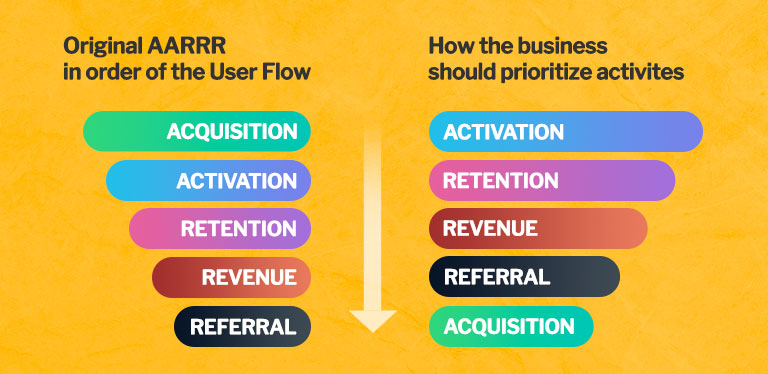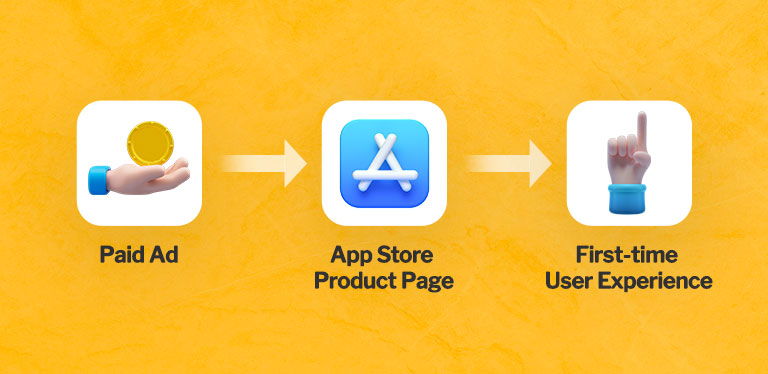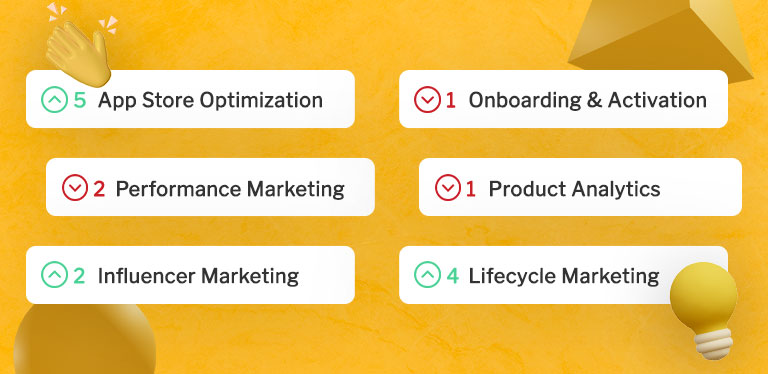Marketing strategy

If you’re operating in the mobile world, you’re already aware that the Pirate metrics are really the bread and butter of any product-led growth.
Today, I’m going to show you how a mobile app should prioritize among these metrics – especially during economic downturns.
I’m not here to argue whether recession is just around the corner, it’s already happening, or not going to happen at all in the foreseeable future. But it’s sure been a topic of our conversations recently with clients, partners, and peers.
After hearing everyone’s take, I decided to write this article and give you a sneak peek into how we help mobile apps grow during uncertain times.
These are not made-up theories about what one should do. This article relies on pure data and facts about strategies we use and tactics we help our clients to implement.
In fact, we give the very same advice and toolset to our clients too during economic downturns.
Let’s get to it, shall we?
Funnel stages ≠ Business priorities
15 years passed since McClure first presented the Pirate metrics, and they are still cornerstones of any product-led growth. No doubt about that.
On the other hand, we’ve got to admit: 15 years is a LOT. Circumstances are different than before…
So marketers need to make slight adjustments to fit the current climate – with or without a recession.
You see, back in the early days of the App Store & Google Play Store – around 2008 – the landscape was entirely different. It made perfect sense to focus on Acquisition to accelerate growth as CPIs were ridiculously cheap, and competition was non-existent in several markets.
Now, key channels are saturated, competition is everywhere, and CPIs are crazy high.
And yet, most companies still focus on Acquisition first instead of getting the product right.

And that is how they end up trapped with the ‘leaky bucket’ problem.
They overlook underperformances of the product while they keep investing heavily in Acquisition to sustain – an otherwise declining – user base.
“Right, so Acquisition shouldn’t be the main priority anymore. I get it. What should it be then?”
Ultimately, the answer comes down to the overall health of the app. But in general, this is how we advise our clients to prioritize their focus:

On the left, AARRR is in the correct order in which users go through stages of the User Flow and interact with the product. But when it comes to how a business should prioritize growth activities, then that’s a whole other story.
To describe the priority order, we use the ARRRA acronym with Acquisition being at the end.
It turns things a bit upside down, I’ll admit – but there’s a reason for all that:
We put Activation always on the top of our list because:
- it’s usually a much ‘quicker’ fix than Retention or Revenue
- it can result in massive drop-offs which is a major opportunity to turn over and fix
- if not optimized, the rest of your product won’t really matter – because the massive amount of churned users will never get to see it anyway
I’m sure you know all about the ‘aha-moment’, activation rates, onboarding completion etc. Although, there’s one thing about Activation I don’t think we talk about enough.
You see, when we discuss User Acquisition strategies with our clients, we always express how important it is to have a ‘unified experience throughout the touchpoints’.
Now, what does this really mean?

It’s essentially the User Flow between Acquisition and Activation – and it has a tremendous impact on paid performance too. ‘Unified experience’ means having the messaging and value props aligned so that users get what they really came for.
A great example is Calm: its brand promise is embedded deeply into everything from their name to the ultimate vision. But more importantly, it’s all over the ads, the app stores, the onboarding experience, and the rest of the touchpoints – undoubtedly providing a unified experience.
When the app finally has a healthy Activation rate, then it’s time to look at Retention.
Long-term Retention requires more time to ‘fix’ but once you have a healthy retained user ratio, you’ll have far better chances to make monetization work too.
Acquisition being the least important action item on your growth list doesn’t mean you shouldn’t spend a dime on paid ads. Quite the contrary.
You obviously need a sustained user base to have enough data and be able to test any of the above action items. But what if you already have thousands of organic installs per month? Would that be enough data to test product tweaks?
Well, yes and no.
The truth is, if you ever plan to acquire users via paid traffic, you still need to run ads at an early stage too, even if you’re not ready to grow yet – let me explain why.
I’m sure you already know, there tends to be a significant difference between organic & paid traffic conversions – paid being the underperformer.
Now, paid performance can easily get worse when you only rely on so-called ‘hard-core fans’ to optimize the funnel.
This phenomenon happens when the app is in early stages. It had zero paid traffic before, and it’s searching for product-market fit.
If you optimize the funnel based on hard-core fans’ behavior – those who find you organically in these early stages – you’ll likely get disastrous results when starting out paid UA later on. It’s especially true for Retention & Monetization.
Instead, run paid ads on a ‘test budget’ during funnel optimization. This way, you’ll be able to develop a funnel that is feasible for paid traffic too in the long-term.
Full Funnel Health Assessment
So now you know which areas of the funnel are top priority, and which ones will only require your attention at a later time.
It’s time to get back to your funnel and analyze existing funnel data.
But how will you know which areas to focus on? Which part of your funnel can be considered healthy and which needs improvement?
I think you might have a pretty good idea of it all on your own…
But in my experience, to do an all-round assessment on the entire funnel, you need to ask a lot of questions. And I mean a lot.
This is why we created the Full Funnel Health Assessment checklist, to help us analyze clients’ funnels no matter what their download volume or app category is.
It consists of 30+ questions covering areas from Acquisition to Analytics, and everything in between.
We ask questions like:
How many distinct value props are highlighted in ads?
Are there any non-standard metrics in use to articulate the activation rate of the product?
Is lifecycle marketing communicating with users at each touchpoint of the user flow?
and so on…
30 questions might seem a lot…
But the good news is: all we need to answer them is funnel data that already exists.
At the end, we have a list of Threats and Opportunities the business should focus on.

What’s ahead
Whether we’re in a recession or not is for another day to discuss, but I dare to say we live in uncertain times.
The above practices and tactics apply very well in economic upswings too.
However, when macro factors are in favor of business growth, it’s easier to overlook flaws concerning the funnel or the business.
The above strategies provide a mindset that one shouldn’t focus only on acquiring new users but on how to keep them too. It focuses on how to build a product with real value that users love and incorporate in their everyday lives.
Having an amazing product is not a ticket to riches but surely sets the stage for growth.
What you should do now
If you are serious about taking your app to the next level, you should watch this wall-through video on our Full Funnel Health Assessment checklist — it’s incredibly useful if you want to revamp/build your Growth Strategy.
For 1-on-1 marketing help, click here


